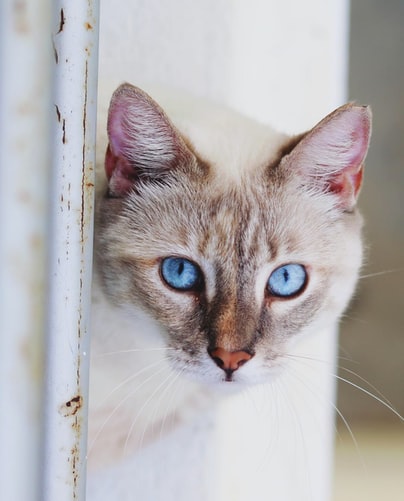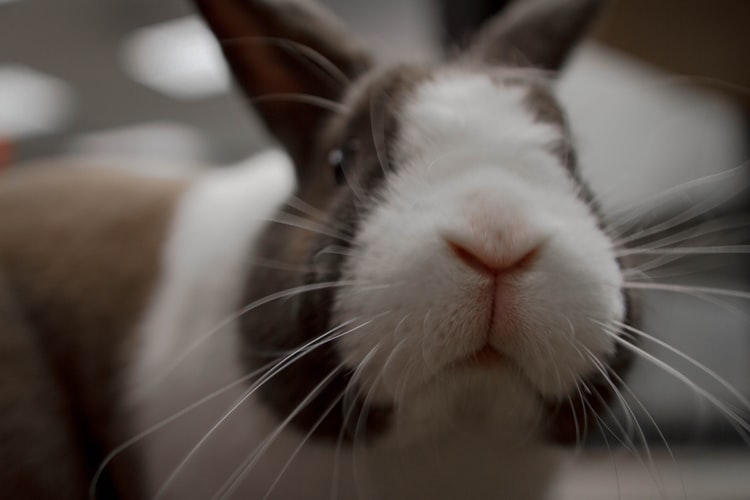Embarking on the delightful journey of rabbit ownership brings with it a set of unique needs and considerations, especially when it comes to setting up their living space.
Fat Cat Video explores the world of these furry companions through the lens of Hare Haha. Offering insightful tips on creating a habitat that not only meets their basic requirements but also enriches their daily lives, this guide serves as your go-to resource.
Discover a wealth of information on selecting the right bedding, choosing toys that stimulate natural behaviours, and much more at www.harehaha.com, ensuring your rabbit’s home is a haven of comfort and joy.
Hare Haha’s Guide: Equipping Your Rabbit’s Cage
Your rabbit will require several accessories for their comfort, such as a litter box, bedding material (hay or straw will work fine) and somewhere safe they can hide when feeling anxious.
An essential item is a heavy ceramic food bowl to prevent your rabbit from tipping it over and a hay rack to ensure fresh hay.
| Item | Details |
|---|---|
| Litter Box | Choose a size suitable for your rabbit’s comfort. Essential for maintaining hygiene. |
| Bedding Material | Hay, straw, or sawdust are recommended. Avoid materials like shredded paper that may cause health issues. |
| Flooring | Opt for solid floors, like plastic, to prevent foot sores. Carpet, non-slip squares, or fleece are alternatives. |
| Hideout | Provide a space for your rabbit to retreat when anxious. |
| Food Bowl | A heavy ceramic bowl is best to prevent tipping. |
| Hay Rack | Ensures clean, accessible hay for your rabbit. |
| Water Bottle | Must be sturdy and leak-proof. |
| Toys and accessories | Include hay racks, tunnels, platforms, or hidey houses for enrichment. |
| Bedding for comfort | Soft materials like hay, straw, sisal rugs, recycled paper bedding, or fleece liners. Avoid deodorizers. |
| Cage Construction | Wire-sided for ventilation with a solid floor for comfort. Avoid chicken wire to prevent injuries. |
| Size and Location | The cage should be spacious and placed in a warm, dry, easily cleanable area. |
| Alternative Bedding | Grass-woven mats made from dried grasses are a durable, cleanable option. |
| Maintenance | Regularly clean and change bedding, and provide a safe, stimulating environment for your rabbit. |
What is the best thing to put on the bottom of a rabbit cage?
Rabbits have traditionally been kept in cages or hutches like livestock and seen as an introduction to caring for pets for kids. Cages or hutches do not meet rabbit needs adequately and should be replaced by proper housing; there are various options available when making this choice.
Ideal rabbit cages should feature wire-sided construction to provide proper ventilation and cleaning while also preventing escapees. Solid floors such as plastic (wooden cages are more difficult to disinfect) should allow your rabbit to stand or walk comfortably across them.
Along with a wire-bottom cage, it is necessary to provide your rabbit with thick layers of bedding that won’t irritate its feet, such as straw or sawdust. Hay can be added for extra softness as well as additional insulation during the winter and odour absorption. However, any material that contains shredded paper could potentially lead to obstruction if ingested by their pet rabbit.
An alternative option would be using an old piece of carpet or square with a non-slip surface as flooring. Fleece fabric flooring may also work well as it is washable, durable, and warm.
Do you put bedding in a rabbit cage?
Establishing an enriching environment for your rabbit is crucial for both their physical and mental wellbeing. From providing soft bedding to adding interactive rabbit cage accessories like hay racks, tunnels, platforms, or hidey houses, these essential rabbit cage accessories help your bunny release pent-up energy while preventing the buildup of bacteria that could cause health issues down the line.
Wood shavings, when finely processed to eliminate sharp edges that could harm rabbits are one of the best choices, while fleece liners may also work well as they’re washable and hypoallergenic. Be sure to monitor if rabbits are chewing or inscribing anything they find into their bedding and change it regularly in order to prevent the overgrowth of bacteria that cause gastrointestinal upset or respiratory irritation in rabbits.
A proper cage should feature wire-sided enclosures to facilitate ventilation and prevent escape, be large enough to comfortably house an adult rabbit, and be located in an area that offers warmth, dryness, and easy cleaning. The garage may not be ideal if too much car exhaust blows into their face! Plastic flooring may be preferred since it makes cleaning simpler while lessening sores on the feet.
What do you put in an indoor rabbit hutch?
Rabbits require plenty of room to run around and run amuck! Additionally, they need to live in a clean and safe environment. There are a range of rabbit cage options, from traditional hutches to collapsible metal pens, available from pet stores. Chicken wire is best avoided since chewing it could injure their feet (sore hocks) over time; consider instead opting for something with solid bottoms like wooden boxes or even linoleum flooring, as these will give more dependable protection.
Linoleum may not be your go-to choice when it comes to rabbit cage floors, but it can actually serve a useful function. Not only is it solid and easy to wipe clean, but it can also be more cost-effective compared to other flooring material options.
There are also other cage bedding materials you can purchase at a pet store or online. Hay, shredded newspaper, or recycled pulp are good alternatives to wood shavings and pellets as they absorb animal waste more efficiently, helping control odors. Unfortunately, they don’t feel quite as natural when sleeping. Ultimately, they might provide better odour control but not quite the same level of comfort compared with soft-padded surfaces like rug squares, carpet mats, or yoga mats.
Be sure to provide your rabbit with a litter box, a water bottle, and a heavy food bowl in their cage. A heavy food bowl helps prevent rabbits from throwing around food, while a sturdy, leak-proof water bottle won’t tip over easily.
What bedding is best for rabbits?
Choose bedding that can help your rabbit relax and remain comfortable, such as soft, warm, absorbent material such as hay or straw that is also eco-friendly. Other suitable choices may include sisal rugs, recycled paper bedding, or fleece liners, though it is important to avoid materials with deoderizers as these may be toxic to rabbits if swallowed. Also, avoid clay cat litter, which clumps together and may cause respiratory issues in rabbits.
A larger option would be an open-top cage such as a dog crate or puppy exercise pen, which will provide your bunny with plenty of room to stretch out and will be easy to keep clean. Just ensure it has wire sides and a solid floor so they cannot escape!
Grass-woven mats made from dried grasses make an excellent bedding choice for rabbits, as they’re both long-lasting and highly durable; they can even withstand chewing from rabbits!
Furthermore, these are easy to keep clean, providing a healthier alternative to synthetic or hay bedding, which may become damp over time due to absorbency issues. Restock frequently as supplies dwindle; make sure you always keep some on hand should bare spots appear!



